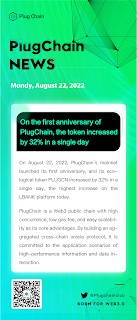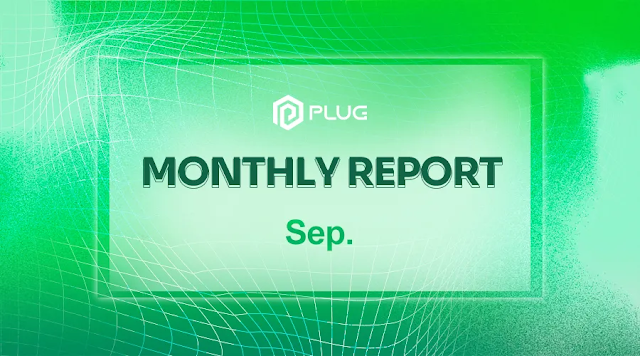Oracle: The Development Engine of the Blockchain World
oreword: On May 21, Ethereum co-founder Vitalik Buterin published an article titled "Don't Overload Ethereum's Consensus". The article states that it is against overloading external applications and protocols into the Ethereum consensus because it poses high risks to the ecosystem. Although it is low-risk to reuse verification nodes for other purposes (such as: the ultimate oracle , the re-pledging agreement represented by EigenLayer, etc.), trying to use the Ethereum social consensus to achieve the purpose of the application itself is high-risk and should boycotted.
Therefore, Vitalik Buterin said that we should adhere to the minimalism of the blockchain, and be wary of application layer projects expanding the "scope" of the blockchain consensus to verify anything other than the core Ethereum protocol rules. This article focuses on the topic of language machines. .
The "oracle " in Vitalik Buterin conception
In Vitalik Buterin's article, the "Ultimate Oracle" is described as follows: In terms of a proposal, users can vote on what is true by sending ETH, which will utilize the SchellingCoin mechanism. Those who vote by sending ETH in support of the majority answer will receive a proportionate share of all the ETH sent by those who supported the minority answer. According to the description: "So, in principle, it's a symmetric game. What breaks this symmetry is a) the natural coordination points where truth lies, and more importantly b) the fact that if you bet on the truth and lose, you can create a credible Ethereum forking path."
According to Vitalik Buterin, the optimal solution for these issues is to analyze each specific problem individually because they are fundamentally different from one another. Some proposed solutions include:
•
Price oracle: Either decentralized oracle for partially cryptoeconomic systems or oracle based on validator voting, with the latter explicitly committing to non-L1-consensus-based emergency recovery strategies. The goal is some combination of the two. For example, a price predictor could rely on a trust assumption that voting participants will gradually become corrupted, allowing users to receive early warnings of attacks and exit any system relying on that oracle. Such oracle can intentionally delay rewards for a long period, so if instances of the protocol are abandoned (e.g., due to oracle failures and the community moving to another version), participants do not receive rewards.
•
More complex truth oracle reporting subjectively verifiable facts beyond prices: A decentralized court system built on top of an incomplete cryptoeconomic DAO.
From Vitalik Buterin's article, it is evident that oracle are designed to be trustless systems, with trust established through transparent mechanisms and open-source code implementations. This is why oracle play a crucial role in the Ethereum ecosystem.
oracle in the Market
oracle, as essential infrastructure in blockchain, are not a "magical" technology, but essentially a means of bringing off-chain data onto the blockchain for applications. Regardless of the type of oracle, they are merely different implementations of data providers.
However, manipulative behavior by oracle can lead to the reporting of incorrect data about external events or the real world. This could be a result of intentional attacks or inadvertent mistakes by the oracle themselves, or it could stem from issues with the data sources that the oracle rely on. Therefore, whether the errors in reporting are intentional or unintentional, they introduce manipulation risks to the protocols that utilize oracle.
As a result, many reputable oracle projects in the market aim to mitigate the manipulation risks associated with oracle by enhancing the security of oracle protocol designs. This is typically achieved by obtaining price feeds from a wide range of trading environments to ensure broad coverage, implementing decentralization to prevent external tampering and eliminate single points of failure, and establishing economic incentive mechanisms to ensure accurate reporting by the oracle. These measures are employed to enhance the security of oracle, defend against manipulation attacks, and provide accurate market prices.
To mitigate the risks of oracle attacks, PlugChain has established decentralized PlugChain Price Feeds through an aggregated cross-chain oracle protocol. This enables access to high-quality and tamper-resistant market data.
Achieving decentralization at multiple levels, PlugChain ensures decentralization in infrastructure at the data source, node operator, and oracle network levels, thus avoiding single point failures and ensuring that oracle reports reflect real market prices.
Cross-chain interoperability is facilitated by multiple independent blockchains that interact with each other, incorporating cross-chain liquidity pools and asset transactions for efficient underlying blockchain protocols.
PlugChain relies on highly reliable oracle node operators. These operators are distributed globally, possess extensive experience, undergo security assessments, and are capable of withstanding Sybil attacks. They are responsible for transmitting price data for the Web3 network.
Deep defense strategies, such as on-chain transparency, proactive monitoring, failover mechanisms, disaster recovery, and backup oracle networks, are implemented to construct a multi-layered architecture.
It is evident that PlugChain Price Feeds utilize a multi-tier aggregation model, which effectively prevents market manipulation through volume-weighted average price (VWAP) calculations and anomaly detection. Furthermore, based on the Cosmos blockchain, PlugChain boasts the fastest price update frequency (TPS up to 10K), ensuring transparency, affordability, and exceptionally fast processing speed of on-chain data.
In addition, PlugChain sources its data from a wide range of world-class data providers in both Traditional Finance (TradFi) and Decentralized Finance (DeFi). This direct access to data from a variety of top financial practitioners ensures the quality and availability of the data.
Envisioning the Future of Oracle
In the future, as blockchain technology continues to advance, the demand for off-chain data will become increasingly strong, highlighting the importance of oracle machines. However, as discussed earlier, a greater possibility in the field of oracle machines is the emergence of a market with multiple coexisting forms. We can consider this evolution as a transition from centralized to consortium to distributed, where the granularity of data providers decreases. Different granularities determine their distinct attributes, as well as the specific service scenarios they are best suited for.
While oracle machines can also be composed of distributed node networks, people have varying perspectives and criteria for evaluating blockchain and oracle machines. Blockchain technology is exploratory in nature, asking "Is this problem suitable for me to solve?" On the other hand, oracle machines are functional in nature, asking "How can I solve this problem?"
Therefore, the design of oracle seeks usability and practicality: they exist to serve demands rather than visions. One key aspect that is easily understood is their pursuit of cost-effectiveness.
In addition to addressing trust issues through technology and mechanisms, the design of oracle machines encompasses various other aspects, such as data privacy and the ability to defend against hacker attacks. These factors are crucial for ensuring the usability of oracle. As a result, the design of oracle machines is a comprehensive engineering endeavor that involves multiple domains.
It is important to emphasize that oracle are critical infrastructure for blockchain. However, this does not mean that the development of oracle will restrict the development of blockchain. On the contrary, the state of blockchain development may have a greater influence on the advancement of oracle . Only when on-chain smart contracts have a wide and urgent need for off-chain data and are willing to pay for it, can oracle truly and comprehensively flourish.
Conclusion: Once upon a time, oracle were born but didn't receive much attention due to a lack of use cases. However, as the application scenarios for smart contracts increased and various DeFi applications emerged, the blockchain ecosystem increasingly needed to interact with the outside world. As a result, oracle machines have gradually become crucial infrastructure in the blockchain world. Fundamentally, oracle machines aim to solve the issues of trust and security. Whoever can address these challenges has the potential to become the "next big thing" and serve as the driving force behind the development of the blockchain world, acting as its engine of progress!








Comments
Post a Comment